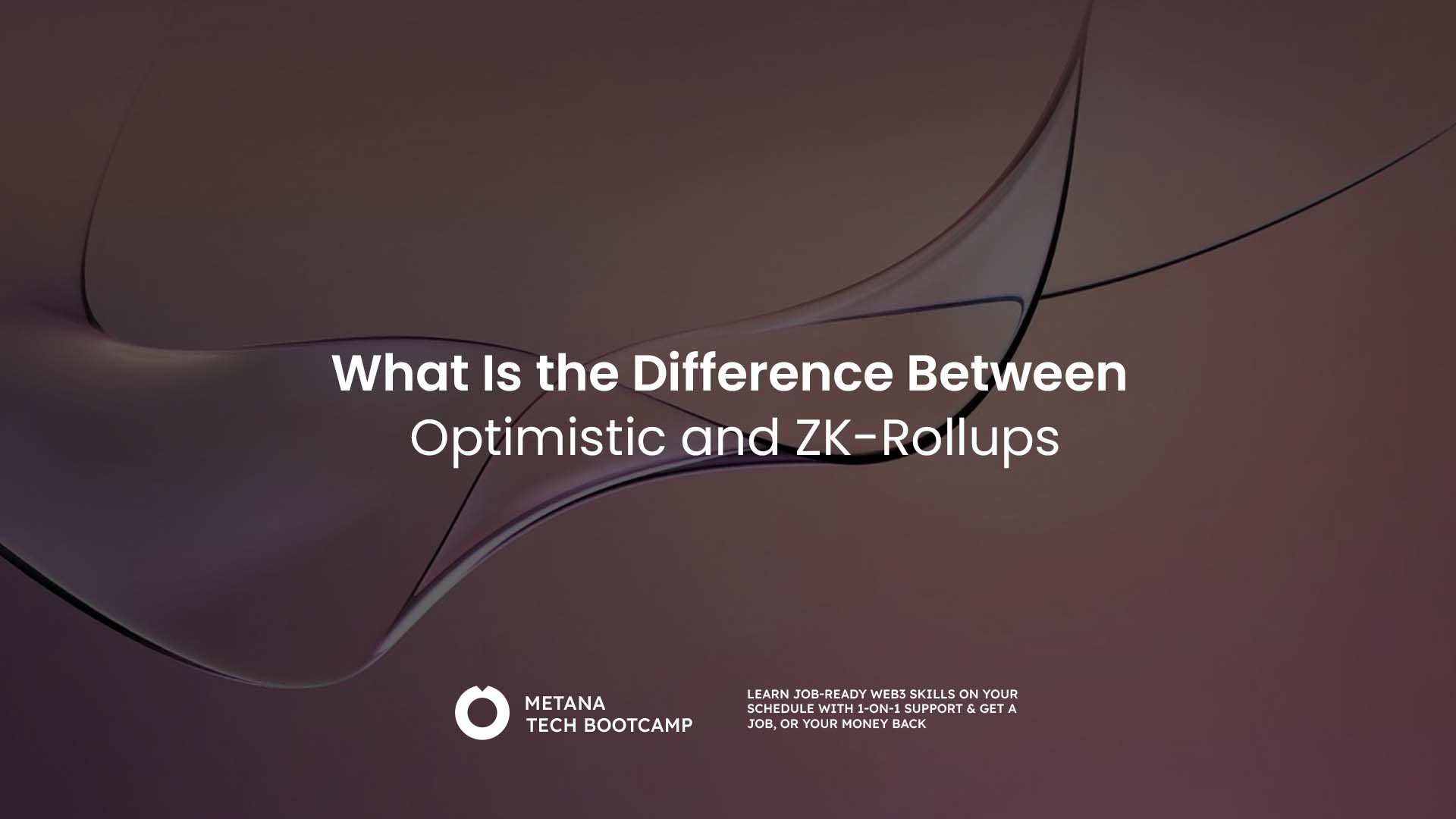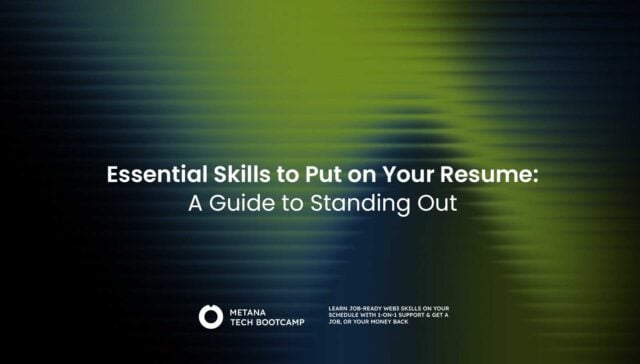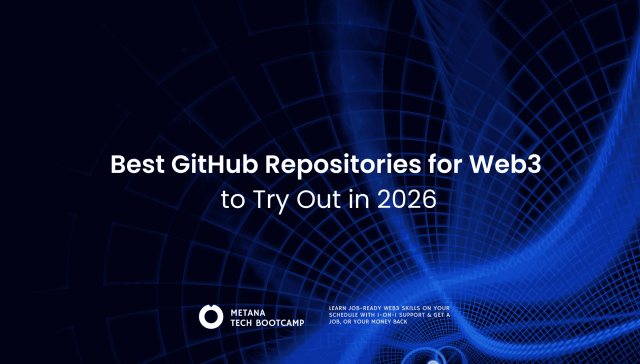Ethereum’s popularity has surged over the years, but its scalability issues have led to high gas fees and slower transaction speeds. To address this, Layer 2 scaling solutions like rollups have emerged, offering a way to increase transaction throughput while maintaining security. Rollups batch multiple transactions together and process them off-chain before submitting them to the Ethereum mainnet. Two primary rollup technologies—Optimistic Rollups and Zero-Knowledge Rollups (ZK-Rollups)—have gained traction, each with distinct advantages and trade-offs. But what is the difference between Optimistic and ZK-Rollups? Understanding these differences can help developers and users choose the right solution for their needs.
TL;DR
Rollups: Layer 2 scaling solutions for Ethereum.
- Process transactions off-chain, submit data on-chain.
- Reduce congestion and gas fees.
Optimistic Rollups:
- Assume transactions are valid unless disputed.
- Efficient but slower withdrawals due to fraud-proof mechanisms.
ZK-Rollups:
- Use cryptographic proofs for instant validation.
- Faster but more computationally expensive.
Choosing: Depends on security, speed, and computational cost.

What are the Different Types of Rollups?
Rollups are broadly categorized into two types:
Optimistic Rollups
Optimistic Rollups assume all transactions are valid unless challenged. They bundle multiple transactions, execute them off-chain, and then post the data to Ethereum. If someone suspects fraud, they can challenge the transaction using a fraud-proof mechanism.
ZK-Rollups (Zero-Knowledge Rollups)
ZK-Rollups rely on cryptographic proofs (Zero-Knowledge Proofs) to ensure transactions are valid. Instead of assuming validity, they prove each transaction’s correctness before posting it on-chain. This method significantly increases speed and reduces withdrawal wait times.
How Optimistic Rollups Work
Optimistic Rollups function based on an assumption that all transactions are correct. They execute off-chain and periodically publish a batch of transactions to Ethereum, significantly improving scalability.
Key Features of Optimistic Rollups:
- Fraud-Proof Mechanism: Users can challenge transactions within a dispute window (typically 7 days). If a transaction is fraudulent, a fraud-proof is submitted, and the incorrect transaction is reversed.
- Lower Computational Costs: Since transactions are assumed valid by default, Optimistic Rollups reduce the need for complex cryptographic calculations.
- Slow Withdrawals: Withdrawals require a waiting period to allow fraud challenges, which can be a disadvantage for users needing instant access to funds.
- Popular Implementations: Arbitrum and Optimism are leading Optimistic Rollup solutions.
How ZK-Rollups Work
ZK-Rollups, or Zero-Knowledge Rollups, utilize Zero-Knowledge Proofs to validate transactions before they are posted on-chain. This cryptographic verification eliminates the need for fraud challenges and allows for instant finality.
Key Features of ZK-Rollups:
- Zero-Knowledge Proofs: Every batch of transactions is accompanied by a cryptographic proof ensuring its validity.
- Instant Withdrawals: Since validity is mathematically proven, withdrawals are instant, unlike Optimistic Rollups.
- Computationally Intensive: Generating Zero-Knowledge Proofs requires significant computing power, making ZK-Rollups complex to implement.
- Popular Implementations: zkSync, StarkNet, and Polygon zkEVM are leading ZK-Rollup solutions.
What is the Difference Between Optimistic and ZK-Rollups?
As Ethereum continues to scale, Optimistic Rollups and ZK-Rollups have emerged as two of the most effective Layer 2 scaling solutions. Both aim to reduce congestion and lower transaction costs, but they function differently.
Optimistic Rollups assume transactions are valid by default and only run fraud checks when challenged, making them efficient for general-purpose smart contracts like DeFi applications. On the other hand, ZK-Rollups use zero-knowledge proofs to verify transactions instantly, offering higher security and faster withdrawals—ideal for payments and high-frequency trading.
The table below highlights the key differences between these two rollup technologies:
Key Differences Between Optimistic Rollups and ZK-Rollups
| Feature | Optimistic Rollups | ZK-Rollups |
|---|---|---|
| Transaction Validation | Assumed valid unless challenged | Mathematically proven before submission |
| Fraud-Proof Mechanism | Required, with a challenge window | Not required |
| Withdrawal Time | Can take days due to fraud-checking | Instant |
| Computational Cost | Lower | Higher |
| Security Model | Based on fraud detection | Based on mathematical proofs |
| Use Cases | Smart contracts, DeFi applications | Payments, high-frequency trading |
Which Rollup Should You Use?
Use Optimistic Rollups if:
- You need cheaper transaction fees.
- Your application involves smart contracts and DeFi protocols that require extensive execution logic.
- You don’t mind longer withdrawal times but prefer lower computational costs.
Use ZK-Rollups if:
- You need fast finality and instant withdrawals.
- Your use case includes high-frequency transactions like payments and trading.
- You can afford higher computational costs for enhanced security.
Conclusion
Ethereum’s scalability challenges have led to the rise of rollups, improving speed and reducing costs. What is the difference between Optimistic and ZK-Rollups? Optimistic Rollups assume transactions are valid unless disputed, making them cheaper but slower for withdrawals. ZK-Rollups use cryptographic proofs for instant validation, offering higher security and faster transactions but requiring more computation.
Understanding what are the different types of rollups helps users choose the right solution. Optimistic Rollups suit smart contracts and DeFi, while ZK-Rollups are ideal for fast payments and trading. As Ethereum evolves, rollups will remain crucial for scaling and reducing fees.
FAQs
Are Optimistic Rollups more scalable than ZK-Rollups?
- Both improve Ethereum scalability, but ZK-Rollups process transactions faster due to instant validity proofs. However, Optimistic Rollups are easier to implement for complex smart contracts.
Why do Optimistic Rollups have a long withdrawal time?
- Since they assume transactions are valid, they allow a challenge period (typically 7 days) for fraud detection before finalizing withdrawals.
Can ZK-Rollups support smart contracts?
- Historically, ZK-Rollups were limited to simple transactions, but new solutions like zkSync and Polygon zkEVM now support smart contracts.
Which rollup is more secure?
- ZK-Rollups are considered more secure as they rely on cryptographic proofs rather than trust in validators to detect fraud.
Will Ethereum 2.0 make rollups obsolete?
- No. Even with Ethereum upgrades, rollups will still be needed to optimize scalability and reduce gas fees.








